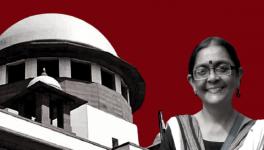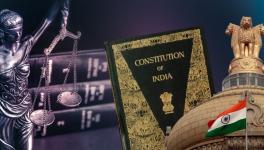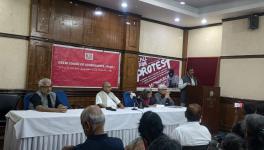Why the Judiciary is Responsible For the Plight of News Media
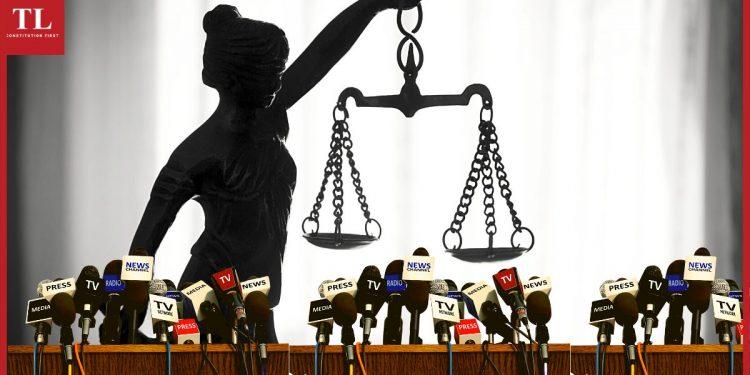
Connecting the precipitous fall in the standards of Indian news media with the descent of the Indian judiciary and the unequal treatment meted by it to those journalists that support those in power and those that hold them to account, lawyer and senior journalist NEERAJ MISHRA writes about how news media can function independently and fearlessly only in the presence of an equally independent and neutral judiciary, and that without the judiciary’s support, news media is bound to decline.
——-
It was definitely the most crass and unprecedented show of defiance ever by anyone from the media, when last year Arnab Goswami, Managing Director and Editor-in-Chief of the Republic Media Network, was granted bail by the Supreme Court in a hurriedly convened video conference hearing.
Goswami had been detained for a handful of days as an accused in a criminal case of abetment to suicide.
The orders to the jailer at the Arthur Road jail seemed to have been crystal clear: release Goswami forthwith, and dispense with the usual bail procedure of the magistrate-local police station-jailer route that ordinary citizens have to follow.
Goswami, of course, turned this into a victory parade telecast live on his channels and underlined it with fist pumps and a huge ceremonial welcome at his own office.
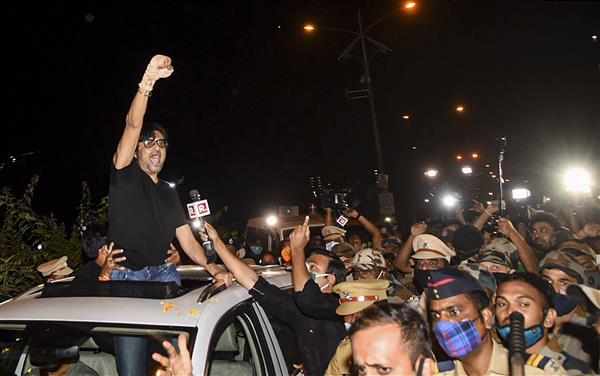
Recently, the former Police Commissioner of Mumbai Param Bir Singh, who Goswami blamed for implicating him in a fake television rating points investigation, approached the Supreme Court with a letter he had written to the Maharashtra Chief Minister in another case. The contents of the letter are, at best, vague and simply make corruption allegations against then-Maharashtra Home Minister Anil Deshmukh without providing any substantial evidence.
Nevertheless, the Bombay High Court directed that the case be investigated by the Central Bureau of Investigation, and the Supreme Court dismissed an appeal against the High Court’s direction by the Maharashtra government.
Some commentators have alleged that this was due to the sour relationship between the Maha Vikas Aghadi government, led by Uddhav Thackeray, in Maharashtra and the Union government.
Differential treatment of different journalists
Is it plausible that the highest court in the land is taking sides in a political stand-off, keeping aside well-established principles of law? Given its 75 year history and unquestionable Constitutional pre-eminence, it seems almost impossible.
But then there is the Keralite journalist Siddique Kappan, under arrest since October last year, whose habeas corpus petition filed in October is yet to be disposed of by the Supreme Court. He has now contracted COVID at the Mathura Jail. He was charge-sheeted with the offence of sedition under the Indian Penal Code (IPC) and various provisions of the Unlawful Activities (Prevention) Act by the Uttar Pradesh (UP) Police on April 3, much after the 90-day maximum period prescribed for the same under the Criminal Procedure Code, and he still could not secure bail. Prima facie his crime was going to report on the Hathras rape case and being picked up on the way.
Ridiculous Cases
The Delhi High Court has the difficult task of dealing with conflicting criminal defamation cases filed by Trinamool Congress Member of Parliament (MP) Mahua Moitra and Zee News editor-in-chief Sudhir Chaudhary against each other. Chaudhary was granted bail about eight years ago in a case of extortion filed by businessman Naveen Jindal. The case was withdrawn by Jindal in 2018 despite sting videos available as evidence against Chaudhary. So an alleged extortionist files a defamation case against a respected MP, for which the MP has been judicially summoned several times.
Siddharth Varadarajan, founding editor of the online news website The Wire, faces several cases under sections 153B and 505(2) of the IPC for daring to tweet about the farmers’ agitation earlier this year. He had been charged by the UP Police under section 505 of the IPC for a tweet last year as well and summoned to appear in Ayodhya amid the national lockdown.
Amish Devgan, Managing Editor of News18 India, on the other hand, secured judicial protection from arrest against First Information Reports (FIR) filed against him in different parts of the country for using a derogatory term to refer to Khwaja Moinuddin Chishti, a celebrated sufi preacher, scholar and philosopher from Ajmer on live TV. The FIRs filed against him have not been quashed yet, but the protection from arrest continues. All the cases against him have been conveniently bunched together and transferred to Ajmer.
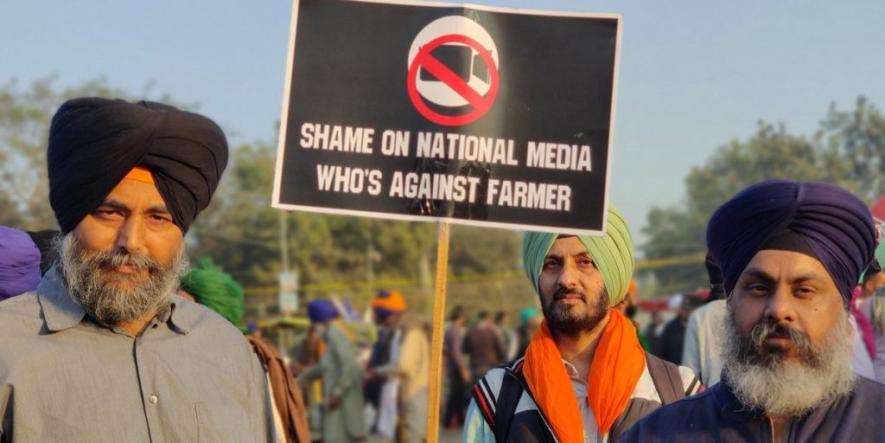
Courtesy: The Wire
The cast of what is popularly referred to as Godi Media, who are known to be close to the current dispensation, who are staunch defenders of the Union Government, who build phony issues, construct false narratives constructed, mischaracterise ideologies, and defame people, get favourable treatment from our judicial system.
Conversely, those like Vardarajan and Siddique, among several others, who do not fall in line are left to suffer the usual course of law. Law, taking its own course, has acquired a new river bed, and is meandering into the uncharted and the undesired.
But the senior-most lawyers in the country are now waking up to remind the Supreme Court of its responsibilities. On the eve of his retirement, former Chief Justice of India (CJI) S.A. Bobde suo moto ordered all COVID-19 related cases pending in six high courts to be transferred to the Supreme Court. Senior lawyers cutting across political affiliation, from Mukul Rohatgi to Vivek Tankha to Dushyant Dave, criticised the apex court for interference in High Courts’ work. On his last working day, CJI Bobde had to list the matter of transfer of cases for a later date at the Solicitor General of India’s request.
But on the issue of ‘perception’, on which there was a lively debate in the courtroom on his last day, CJI Bobde was found short. Last year, in a different hearing, he had accepted without any inquiry the Union Government’s position that there were no migrant workers forced on the road by the national lockdown, and Dave was quick to point out that senior lawyers of the Supreme Court were worried about this perception that the highest court has given in to executive pressure.
Where does all this leave the news media? One must first appreciate the underpinnings of news media in India.
The uncomfortable truth about how news media works
Briefly, journalists are only as good as their conscience and their brands. The bigger the brand, the heavier the weight on their conscience and the weightier their responsibility, to earn revenue for themselves and their brand.
In an ideal media landscape, which did exist for a while, journalists were lesser paid but highly respected. Their employers were strong and able to withstand pressure from governments primarily because it takes less money to keep their wheels in operation. There once were idealists both amongst journalists and their employers, but all that has changed today. Salaries have shot up in the last three decades, ad rates have gone up, as has the pressure to deliver revenue or perish, just like in any fast-moving consumer goods market.
Now, newspapers and channels are products, and journalists are their sales, marketing and advertising executives all rolled into one. The casualty in all this has been the ‘consumer’. Unfortunately, they are not simply entities that consume news content but are also citizens and persons with an inalienable stake in credible news media.
This explains the anger of the ‘consumer’ against what they are forced to consume. The decline in the quality of news media has brought to surface disenchantment with the ‘product’, and thus the endless trolling as Godi media.
Still, things can work, just as they do in the West. One can break stories critical of the State and still retain a readership or viewership. But this, unfortunately, is only possible when the most crucial pillar of any democracy, the judiciary, remains strong, honest and vigilant.
The media in itself does not possess any power to correct or punish. It can only reveal; it can only dig; it can only expose. If all that effort comes to naught, then media organisations and their characters lose steam. That’s exactly what has been happening in India.
The descent of our judiciary
The Indira Gandhi years, which saw a similarly weakened judiciary due to constant threats, pressures and bogus appointments, were responded to by the judiciary with the collegium system of appointment of judges. This ensured the independence of the judiciary for a while. While the collegium system has its own shortcomings, such as opening itself to credible charges of nepotism, it kept governments on a leash, and protected the institution of the judiciary with élan.
Also read: Does the Collegium System Ensure Independence of Indian Judiciary?
It all started crumbling, though, in 2014 when the National Judicial Appointments Commission (NJAC) was announced. The NJAC’s constitutionality was challenged before the Supreme Court, which rejected it in favour of the collegium system it had adopted in 1992. But then a series of judgments, beginning with the Sahara-Birla diaries case, began to undermine its working.
A division bench of Justices Arun Mishra and Amitava Roy dismissed a petition by the non-profit public interest litigation (PIL) organisation Common Cause about the Birla diaries. But this was not a simple dismissal. The apex court aborted the issue once and for all, by declaring that the “materials in question are not good enough to constitute offences to direct registration of FIR”.
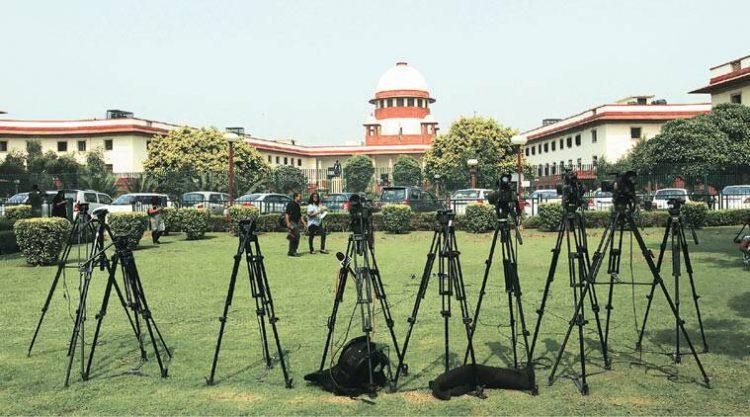
The court could have simply dismissed the case, asking the petitioner to avail of other statutory remedies. Instead, the court went on to adjudicate on the merits of the matter, and held that the impugned diary entries were not admissible as evidence as per Section 34 of the Evidence Act. The admissibility of the documents was not an issue which was to be looked into at that particular stage of investigation. It was like putting the cart before the horse.
This was swiftly followed by the Supreme Court judgments in the Loya and Bhima Koregaon cases, both of which appeared to favour either the Union Government or persons in it.
Then came the big Rafale case. Allegations of corruption and payoffs in the defence deal had been made by the Indian National Congress, and eventually, a PIL was filed before the Supreme Court to stay the deal.
The court not only declined to order a probe into corruption allegations over the deal by citing the limited scope of judicial review over defence deals, it declared that the decision-making process was proper, accepting the Union Government’s justification for pricing, and concluding that the government did not have a role to play in the selection of Reliance as an offset partner in the deal.
The French news media is still at it, and comes out with periodic revelations; the latest one is that the Agence Française Anticorruption (the French anti-corruption agency) has found that Dassault Aviation, the French aircraft manufacturer of the Rafale aircraft, had paid one million dollars to an Indian company in connection with the 2016 deal that the Supreme Court had already refused to investigate. The noise in the controlled Indian news media space on this has thus far been deafeningly low.
From public corruption allegations to other issues of public interest like the farmers’ agitation, the anti-Citizenship Amendment Act protests, and even the migrant workers’ crisis, most of the news media coverage has been disappointing. The back up from the judiciary, too, on all these issues, has been severely lacking.
Contrast this with the judicial activism of the Delhi Commonwealth Games scam, the coal allocation scam, and the Comptroller and Auditor General findings on the 2G spectrum scam earlier last decade. The judiciary also took an active interest in cases related to the Jessica Lal murder and Nirbhaya rape cases, among others, because these were issues that echoed in our society. Now, the media could cry itself hoarse over the Kathua and Hathras rapes, but there is no parallel support from the State, including the judiciary, so the stories die a swift and natural death, to the governments’ convenience.
So, where is the incentive for breaking stories? The news media heroes of today are not those who take on the government over issues of corruption and democratic rights, but those who eulogise them and are then backed up on social media, creating a false bubble around such narratives.
The weakening of our judiciary is a fact that has led to the fourth pillar also going under. No one has stated it better than former CJI Ranjan Gogoi himself: “Who goes to the court? You go to the court and regret. … If you go to court, you don’t get a verdict ….”
To expect the news media to stick its neck out, lose out on government largesse, and continue doing public service is a bit much. So it has happily accepted the alternate epithet of Godi Media.
(Neeraj Mishra is a senior journalist, farmer and lawyer based in Raipur, Chhattisgarh. The views expressed are personal.)
The article was originally published in The Leaflet.
Get the latest reports & analysis with people's perspective on Protests, movements & deep analytical videos, discussions of the current affairs in your Telegram app. Subscribe to NewsClick's Telegram channel & get Real-Time updates on stories, as they get published on our website.












